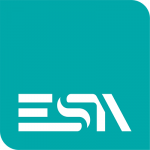Selling solutions rather than products. This is servitization, a business model that exploits digitalization and new technologies to offer more customized, flexible, and efficient solutions. Ideal for responding in a targeted manner to the needs of consumers and, at the same time, allowing producers to generate a steady stream of revenue over the years.
Today there are three levels of servitization:
- base services
- intermediate services
- advanced services
Let’s delve into them.
Three levels of servitization
Servitization requires a company to provide a form of service together with its products. There are different levels of servitization offer based on the technology used, the type of product, etc. In particular:
1. Basic servitization
Base-level servitization includes services such as maintenance, repair, overhaul, and asset support. In this case, these are services provided at the customer’s request or with a fixed and constant frequency.
For example, a company that sends its technicians for maintenance every quarter offers the first level of servitization. The same goes for a manufacturer who supplies his customers with spare parts for machinery to facilitate repair activities.
2. Intermediate servitization
The second level of servitization, or the intermediate one, refers to the MRO (Maintenance, Repair and Operations) and support services provided proactively and enabled with remote monitoring and diagnostic capabilities. It is therefore a question of more punctual, precise, and customized services for each client, rather than a standard model that is the same for everyone.
In this case, businesses provide ongoing after-sales services, such as remote monitoring packages or long-term maintenance.
3. Advanced servitization
The third level of servitization is the advanced one and has some variations. In general, advanced services are defined by contractual agreements that require a product-service system, i.e. a service developed by the supplier and used by the customer. Compared to the previous levels, the updating of advanced servitization is relatively new.
Some examples of advanced servitization are:
- Product as a Service (PaaS): this model focuses on the service, rather than the product. The customer does not purchase the resource but pays for the use of the product or per unit of service provided by the resource. There are different types of “product as a service”, such as leasing, pay-for-use, and performance agreements.
- Consultancy: consultancy services for the optimization of assets and processes.
- Results-based model: companies that sell business results rather than assets.
- Service Level Agreement (SLA): the manufacturer assumes contractual responsibility for the availability of resources and/or the quality of the output.
FIND OUT MORE ABOUT SERVITIZATION AND ITS DEVELOPMENT THANKS TO THE IIOT

